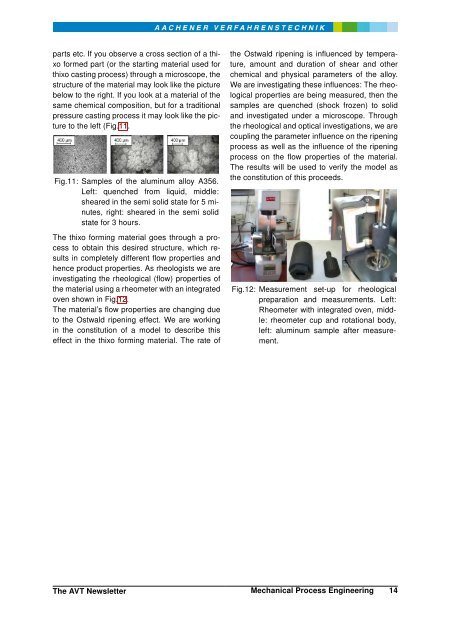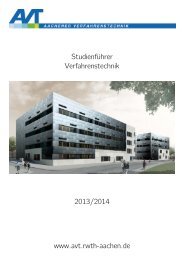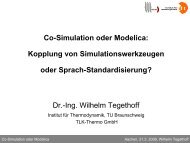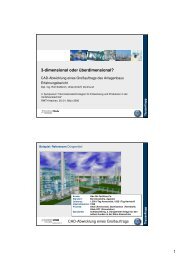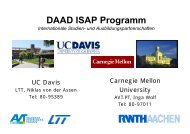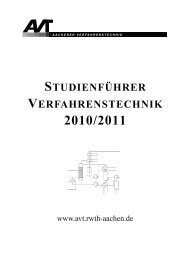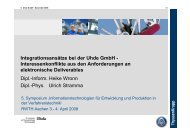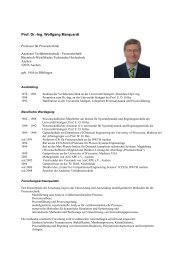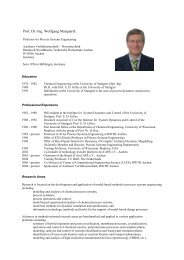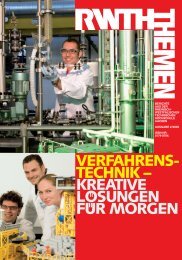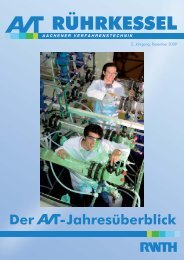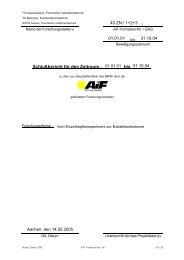Newsletter - Aachener Verfahrenstechnik - RWTH Aachen University
Newsletter - Aachener Verfahrenstechnik - RWTH Aachen University
Newsletter - Aachener Verfahrenstechnik - RWTH Aachen University
Create successful ePaper yourself
Turn your PDF publications into a flip-book with our unique Google optimized e-Paper software.
parts etc. If you observe a cross section of a thixo<br />
formed part (or the starting material used for<br />
thixo casting process) through a microscope, the<br />
structure of the material may look like the picture<br />
below to the right. If you look at a material of the<br />
same chemical composition, but for a traditional<br />
pressure casting process it may look like the picture<br />
to the left (Fig.11.<br />
Fig.11: Samples of the aluminum alloy A356.<br />
Left: quenched from liquid, middle:<br />
sheared in the semi solid state for 5 minutes,<br />
right: sheared in the semi solid<br />
state for 3 hours.<br />
The thixo forming material goes through a process<br />
to obtain this desired structure, which results<br />
in completely different flow properties and<br />
hence product properties. As rheologists we are<br />
investigating the rheological (flow) properties of<br />
the material using a rheometer with an integrated<br />
oven shown in Fig.12.<br />
The material’s flow properties are changing due<br />
to the Ostwald ripening effect. We are working<br />
in the constitution of a model to describe this<br />
effect in the thixo forming material. The rate of<br />
the Ostwald ripening is influenced by temperature,<br />
amount and duration of shear and other<br />
chemical and physical parameters of the alloy.<br />
We are investigating these influences: The rheological<br />
properties are being measured, then the<br />
samples are quenched (shock frozen) to solid<br />
and investigated under a microscope. Through<br />
the rheological and optical investigations, we are<br />
coupling the parameter influence on the ripening<br />
process as well as the influence of the ripening<br />
process on the flow properties of the material.<br />
The results will be used to verify the model as<br />
the constitution of this proceeds.<br />
Fig.12: Measurement set-up for rheological<br />
preparation and measurements. Left:<br />
Rheometer with integrated oven, middle:<br />
rheometer cup and rotational body,<br />
left: aluminum sample after measurement.<br />
The AVT <strong>Newsletter</strong> Mechanical Process Engineering 14


